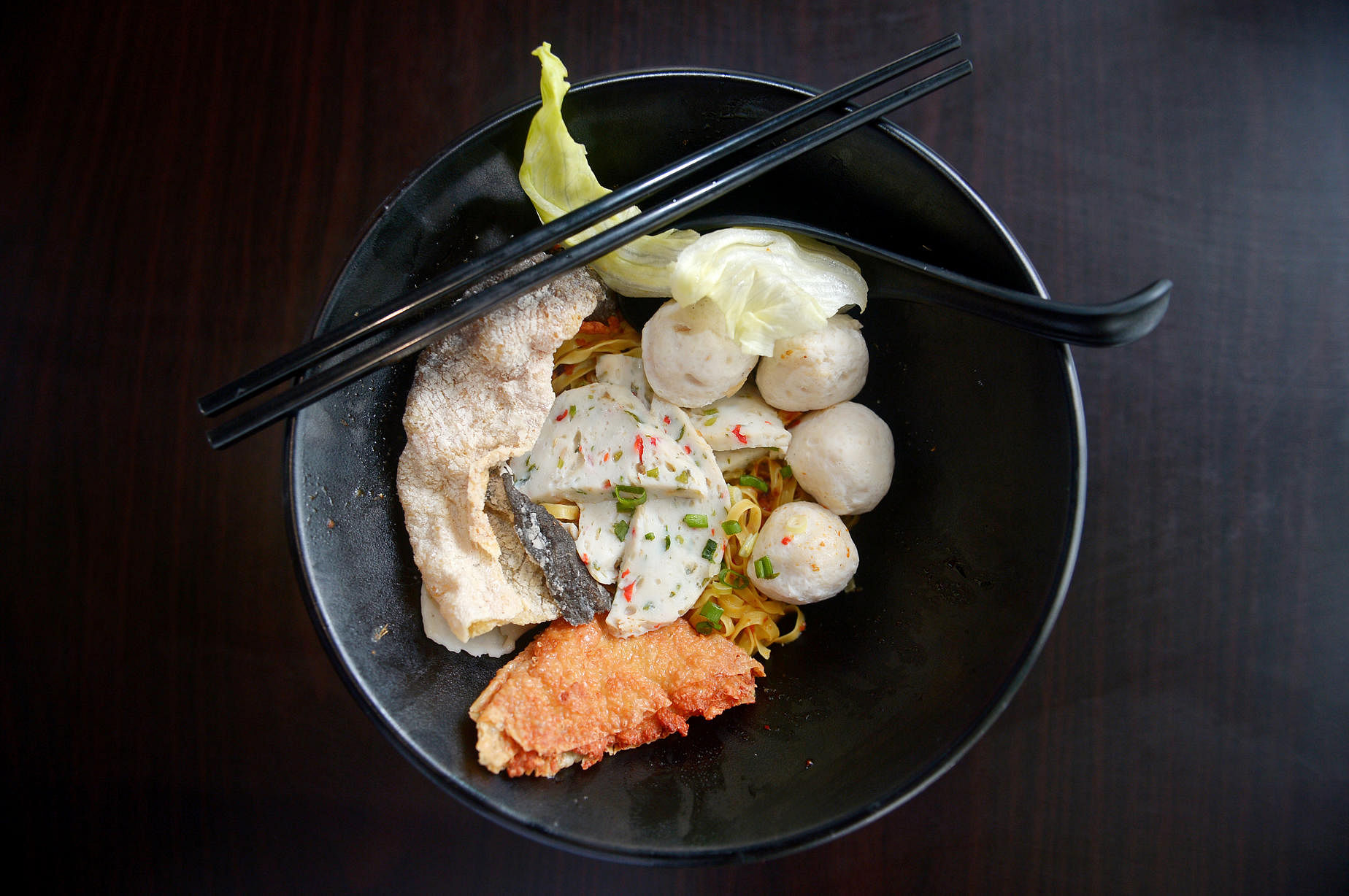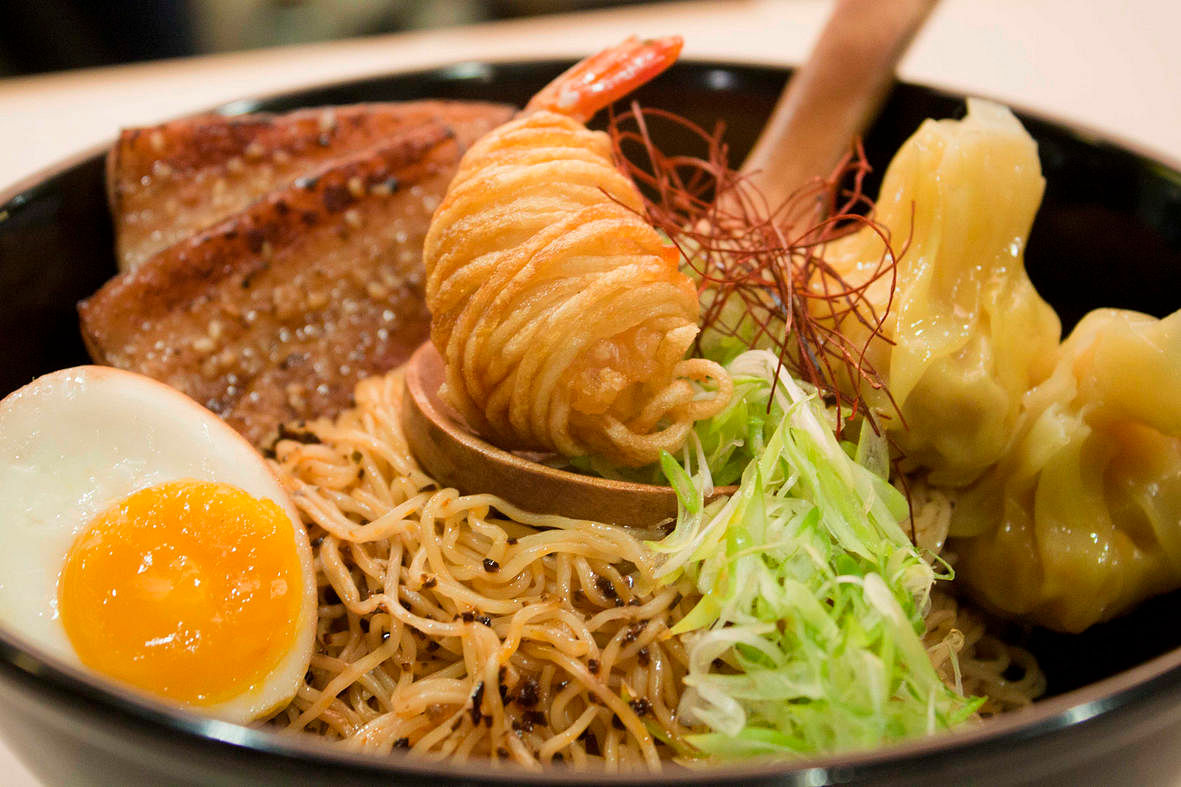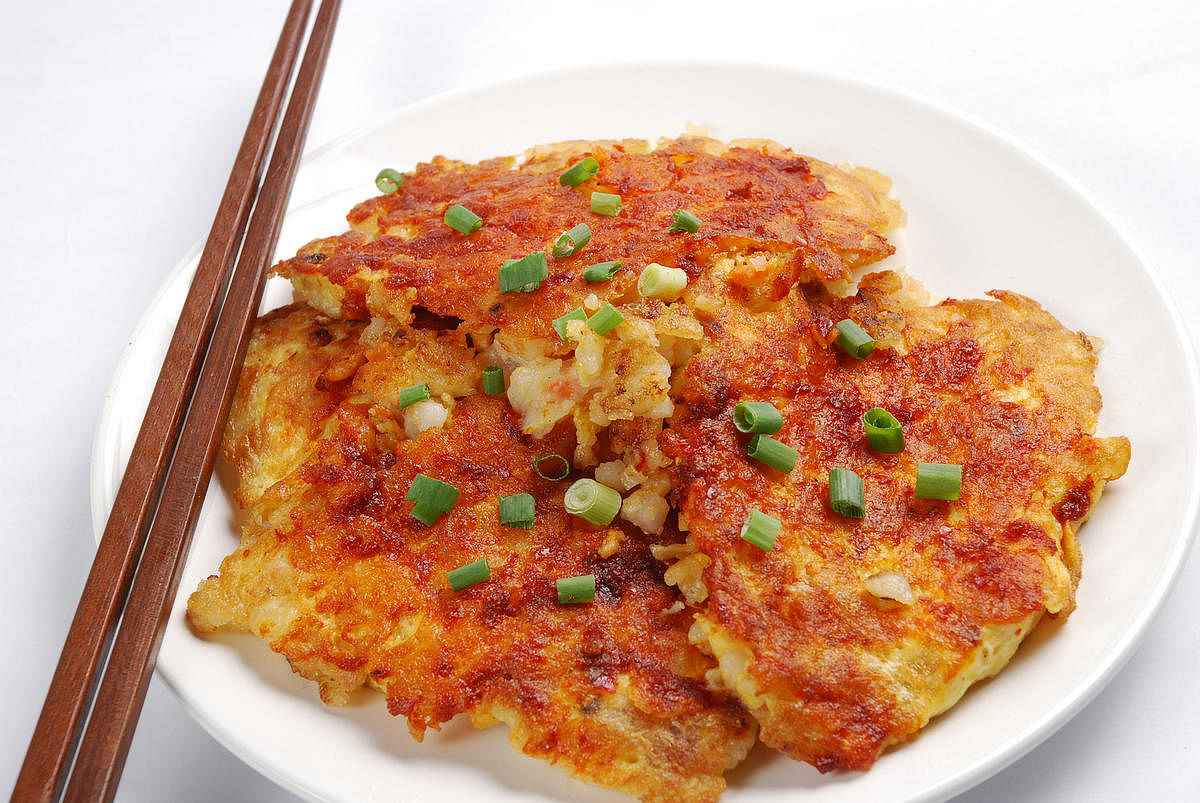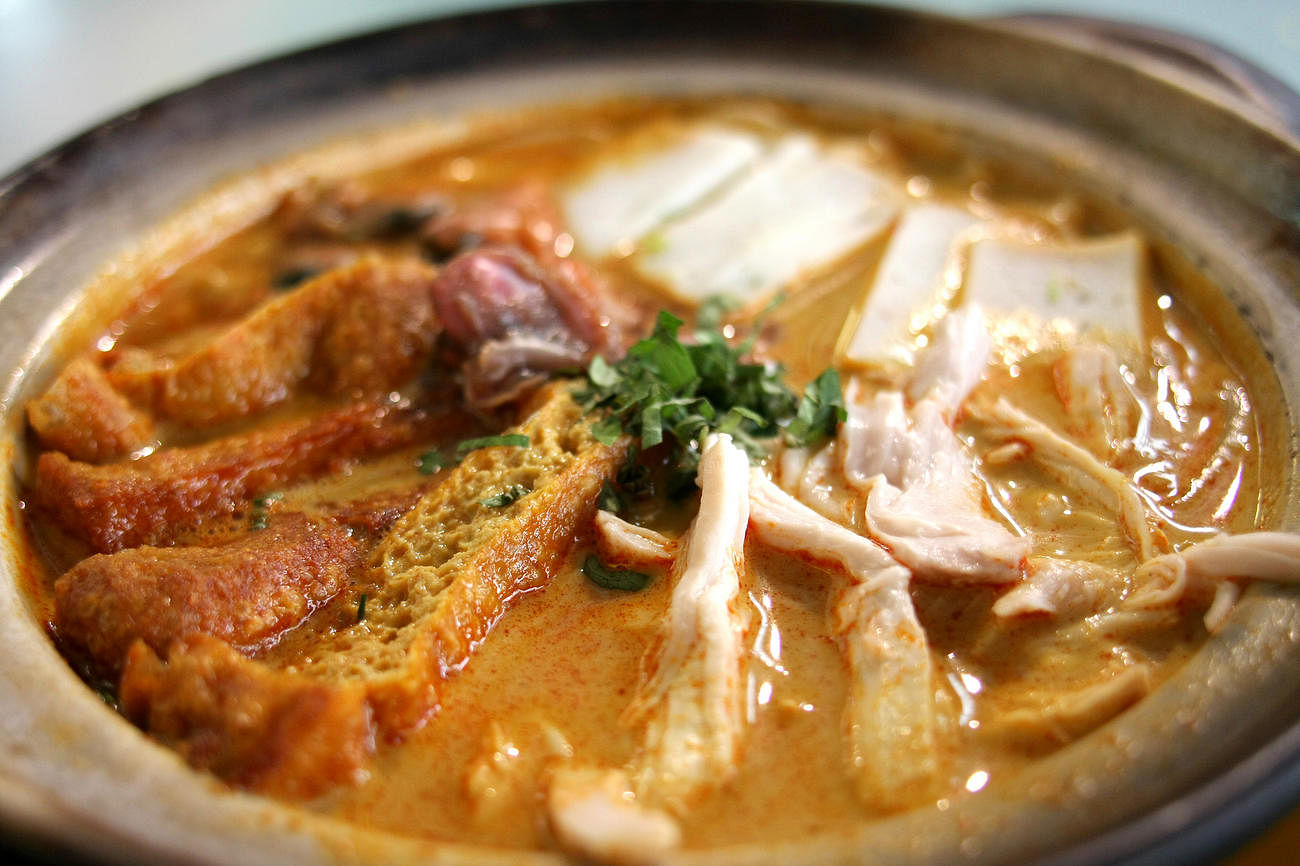SINGAPORE - Thirty-four restaurants and hawker stalls are on the Bib Gourmand list of the inaugural Singapore Michelin Guide.
Among them local hawker favourites from chicken rice to fishball noodles made it to the internationally recognised food directory.
Many of them have graced the food pages of The Sunday Times before. Here's a taste from The Straits Times archives.
The Fishball Story
Published on June 13, 2014

Fortunately, some young people have taken up the challenge to uphold tradition. One of them is Douglas Ng who opened a stall about two months ago to sell fishball noodles made using his grandmother's recipe.
The fishballs, and the chilli-scallion-studded slices of fish cake, do not have the white factory sheen of most fishballs. They are a little grey and rough hewn, and are delightfully bouncy. What's even better is that they taste of fish, not flour.
The generic noodles that the stall uses are a bit of a letdown, but the seasonings are robust, the cubes of crispy lard a joy to eat. Prices start at $3 a bowl, and I usually ask for an extra $1 of fishballs and fish cake.
From scratch food is rare in hawker centres, I'd better have my fill.
A Noodle Story
By Eunice Quek, published on April 7, 2013

And while it has become a pastime for many people to get into friendly food arguments over which stall serves the best chicken rice or bak kut teh, few take the risk to create their own unique dishes.
So it is refreshing to stumble on hospitality and culinary school Shatec classmates Ben Tham and Gwern Khoo at 1½-month-old A Noodle Story at Amoy Street Food Centre. They serve what they call "Singapore-style ramen" (above).
This "ultimate noodle dish", as dubbed by Mr Khoo, is a $5 one-bowl wonder of thin egg noodles, topped with two slices of melt-in-your-mouth char siew cooked sous vide, two wontons, half an onsen egg with requisite runny yolk and a crispy potato-wrapped prawn.
It is like Japanese ramen meets Hong Kong wonton noodles meets Italian pasta. The noodles - served dry - are seasoned with lemongrass and ginger-infused oil, which remind me of pasta tossed in olive oil, somewhat like aglio olio with Asian flavours.
In addition, the noodles get a generous sprinkling of kelp and prawn dust, made with blended dehydrated prawns, adding more depth of flavour to the bowl. For once, the dollop of chilli on the side isn't necessary.
The four main ingredients - char siew, wonton, egg and prawn - are also available as side dishes at $3 a serving. While this may be the only item on the menu so far, I do hope that Mr Khoo and Mr Tham come up with more noodle creations.
Who knows, it may inspire more young hawkers like them to join the trade and keep the hawker spirit (and food arguments) alive.
Chey Sua Carrot Cake
Published on July 27, 2008

What: Chey Sua Carrot Cake, Block 127, Lorong 1 Toa Payoh
If you look closely, you will see that her forearms are speckled with scars left by spurting oil from the pan.
They are marks of her dedication to her craft. Every plate of Chinese carrot cake she serves is pan-fried to golden perfection with crispy edges.
Ms Tay, who is single, has been flipping carrot cake for more than 30 years.
She says: "There's no avoiding the oil burns especially when I'm working fast to satisfy the crowds, but I'm used to it."
While she deals with the hazards of her job stoically - she sometimes requires acupuncture for her sore upper arms after a hectic day of frying - she swells with pride and speaks animatedly about her regular customers who have been eating at her stall since they were children and now return with their own families.
She inherited the stall from her late parents. After finishing Primary 3, the fourth of seven siblings and the oldest of the girls in her family began working at the stall full-time.
The recipe remains unchanged and she makes and steams only about 100 rice bowls of the carrot cake every day because she cannot cope with more.
She says the secret to good carrot cake lies in skilful control of the fire to ensure that the cake is evenly fried and nicely browned without being burnt.
If she has one lament, it is that her family's culinary legacy might be lost when she retires. "It's hard to find people these days who are willing to put up with the long hours of the job and demanding customers. But if anyone is willing to learn, I'm more than happy to teach."
Alexandra Village Claypot Laksa
By Teo Pau Lin, published on May 18, 1997

Just look around the hawker stalls and food courts that offer claypot rice, claypot noodles, claypot seafood and claypot curry.
Somehow, food that is stewed in earthen pots is instantly made superior to that prepared in their metallic cousins.
Even Madam Ang Siew Yan who started selling laksa in claypots five years ago, does not know exactly what it is about them. "All I know is that they make the laksa more fragrant," she said.
Visit her at the Depot Road coffee shop where her stall is located and one sees that lunchtimes for her are always manic.
It is easy to think her stall is the only one in operation because almost all seated customers are slouched over bowls of hot laksa.
A sweat-drenched Madam Ang never forgets an order from the long order list. "You have to wait 20 minutes," she warns the waiting patrons.
But good things come to those who wait, and patience is rewarded when the pots do arrive.
Choose from either mifun, yellow mee or guotiao, which come topped with crunchy beansprouts, fish cake strips, fried bean curd and a choice of either cockles or prawns that swim in a pool of famously fragrant gravy.
Made with freshly squeezed coconut milk extracted from the 20 fruits that Madam Ang uses every day, the gravy is rich, aromatic and not too spicy.
And if you still do not understand how the claypot contributes to the taste, you can be certain of at least one thing - the pot's insulating powers are astounding because the food is kept warm right until the end of the meal.
The piping-hot pots, while contributing to Madam Ang's success, have also turned out to be an occupational hazard.
"I get scalded all the time," she said, turning over her right forearm to show a number of dark brown marks.
"But I'm used to it by now," she added with a smile.
With the help of her husband, she sells about 200 bowls a day at $2.50 each.
Madam Ang learnt the trade from her father who was a laksa street vendor in the '50s when a bowl cost only 30 cents. She helped with his push-cart stall when she was only five years old and inherited a secret recipe that no amount of cajoling can make her reveal.
She simply said: "Twenty ingredients are involved."
Twenty? Surely, that cannot be right.
It should be 21.
You should not forget that one extra component wielded by the magical claypot.
Na Na Curry
By Raoul Le Blond, published on September 16, 1995
It opened its shutters just 1½ months ago, but already its chicken curry rice is the talk of Bedok - both for its taste and its price.
Na Na Curry at the Bedok NTUC FairPrice Coffeeshop is one of the first franchisees of the NTUC's Foodfare co-operative.
It dishes up satisfying meals for as little as $2.
On its menu are curries of every sort, from chicken and mutton to fish head and vegetable.
The stall at Block 204, Bedok North Street 1, packs in about 1,000 customers a day, most of them factory workers and bus drivers from the nearby bus interchange.
Because of the NTUC's requirement that co-operative members keep food prices low, the stall offers an economy pack - rice, chicken curry and vegetables - for $2.
This is $1.50 less than what Na Na Curry charges at two other outlets in Marina South and Tanjong Pagar, which are not under Foodfare.
It also buys meat and vegetables in bulk from NTUC FairPrice, which delivers them to its Bedok stall.
A part-owner of Na Na Curry, Mr Yap Hock Kee said it started the franchise as part of its plans to open more shops islandwide.
He said: "Many people wanted to do business with us, but NTUC is a big organisation and we feel it has the capability to help us expand our business."

